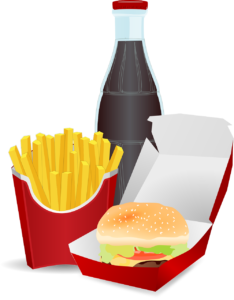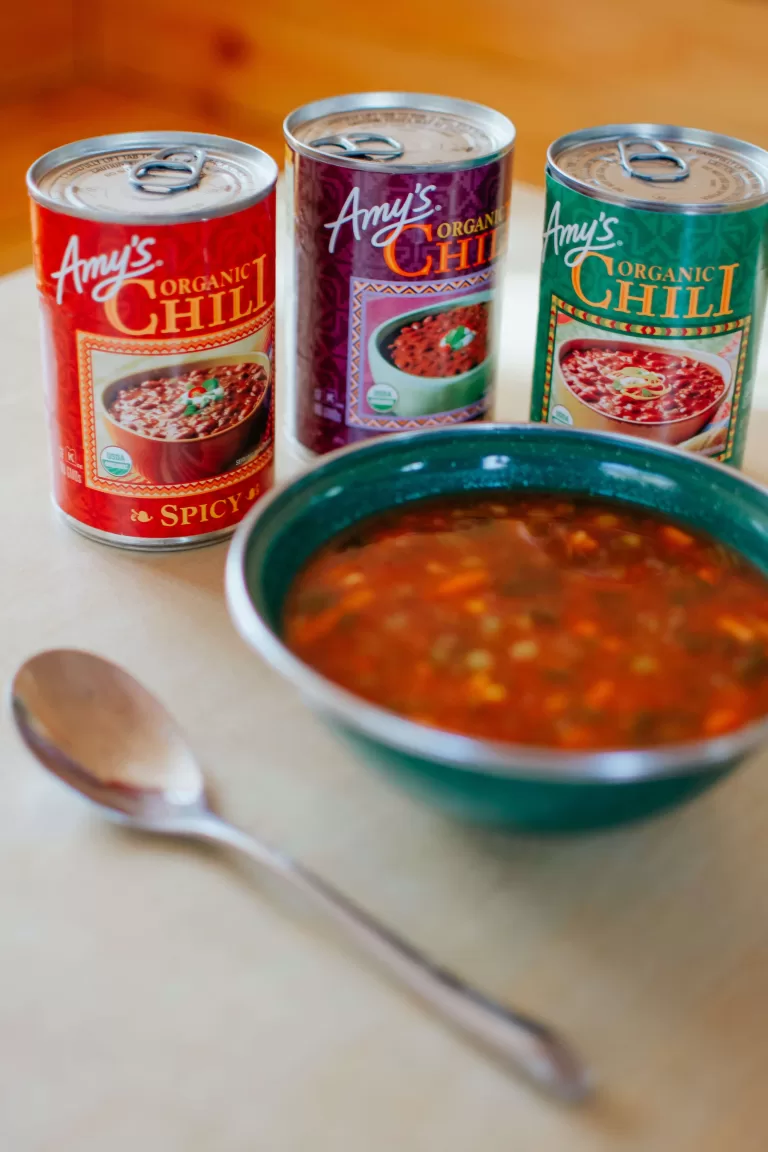
What Are Processed Foods?
Processed foods aren’t the most nutritious for our bodies, but it’s hard to avoid them in today’s world. Whether we’re busy moms on the go, long-haul truck drivers looking for a quick bite of something fatty and salty during our travels, students trying to get by with dorm food at college, diabetics needing low-sugar meal options due to health concerns or those of us with high blood pressure worrying about salt intake – processed foods have become an unavoidable part of our lives. So let’s take a closer look together at what “processed” really means and why it’s so important that we try to understand it better.
Processed foods are foods that have been altered in some way during production and preparation.
Food processing includes freezing, canning, baking, drying, and grinding grain to make raw flour.

Altered Foods
Foods That Have Been Chopped Or Washed
Foods that have been chopped, washed, heated, pasteurized, cooked, dehydrated, blended, or packaged fall under this category. Foods supplemented with salt, sugar, fat, nutrients, salts, or other food modification.
While some food processing can be beneficial – such as increasing shelf life or making food more convenient – other types of processing may result in the loss of essential nutrients.
Over-processed foods also contain additives and preservatives that can harm our health. Some processed foods contain incredibly high salt, sugar, and fat levels.

Convenience Foods
Tertiary Processed Food
Food that has undergone further processing to make it more appealing is considered convenience or “tertiary processed food.” This food is typically ready to eat and has a longer shelf life than unprocessed foods.
Examples of tertiary processed food include canned soups, frozen dinners, microwavable meals, and pre-packaged snacks. Many convenient foods contain added preservatives, sodium, sugars, artificial flavors, and colors. These foods can be detrimental to health if consumed in excess.
Consumers should be aware that convenience foods are often higher in calories and have less nutritional value than fresh fruits and vegetables, lean proteins, and whole grains.
They may also contain hidden fats, sugars, additives, and preservatives that can compromise health when consumed regularly. It is important to read food labels carefully. Convenience food is food prepared to speed up the process of preparation and consumption.
A Sandwich
A sandwich is an example of convenient processed food. It contains two slices of bread and some filling, such as meats, vegetables, or cheese. Sandwiches are easy to make and can be eaten on the go.
Alternatively, it is an accessible food item to consume on the go, like a chocolate bar, some fruit, some cheese, or a cold cut. However, convenience foods like sandwiches tend to have higher sodium levels and can contain processed meats, artificial ingredients, and preservatives.
Frozen Dinners
In addition to sandwiches, frozen dinners is another type of convenience food. These meals come in single-serving portions and can be cooked quickly in the microwave or oven. However, many frozen dinners contain a large amount of sodium, fat, and calories that could lead to weight gain and other health issues.
Canned Soups
Canned soups are another popular convenience food. They are usually inexpensive and easy to prepare. However, canned soup can contain high levels of sodium, fat, and preservatives that can be unhealthy for you when consumed in large amounts.
Fast Food
Finally, fast food is one of the most popular types of convenience food. Fast food restaurants offer burgers, pizzas, tacos, and other items that can be prepared quickly and eaten on the go.
However, fast food typically contains high levels of sodium, fat, and calories that could lead to weight gain and other health issues if consumed regularly.
The food might have been prepared as a cooked meal that is ready to eat, a sandwich, or a salad. Focusing on and paying close attention to food labeling is necessary when consuming convenience food.
Artificial Colors And Flavors
Avoid convenience and processed foods that contain artificial colors, flavors, or sweeteners. If a product has more than five ingredients, or you can’t pronounce any of the ingredients, it is probably best to avoid it.
These additives are often added to enhance the flavor and color of food but can be potentially hazardous to health. Studies on artificial colors have shown that they may increase hyperactivity in children and cause allergic reactions, particularly in those with asthma or other respiratory illnesses.
Therefore, opting for foods without artificial ingredients is recommended when possible.

When it comes to food, there are different schools of thought. Not all processed foods are unhealthy. Some processed foods can be part of a healthy diet in moderation. When possible, opt for fresh fruits, vegetables, and whole grains. These foods are not only more nutritious and healthy, but they also taste better!
Read The Label
When choosing processed foods, reading the label and choosing products made with whole, natural ingredients is essential. Some people believe that eating everything naturally is the way to go, while others believe that processing can improve the nutritional value of certain foods.
This is why gathering all the information from food labeling is crucial to make an informed decision about your options and what foods are best for you.

Today, we will examine both sides of the argument and try to conclude the best-processed foods to eat. And in the process (no pun intended), we allow you to choose your own. To understand the meaning of processed foods.
On the one hand, some processed foods can be very convenient and affordable, while others are healthier and more expensive. Processed foods often have a longer shelf life than fresh foods, so you don’t have to worry about them going wrong.
They are also usually cheaper than fresh foods, which brings us back to cost, and let’s be honest – they often taste better. On the other hand, some processed foods are typically high in unhealthy fats, salt, and sugar.
Additives And Preservatives
They often contain additives and preservatives that can harm our health and tend to lack essential nutrients, vitamins, and minerals. So, what’s the verdict? Are processed foods good or bad for us? Unfortunately, there is no simple answer. It depends on how the individual food is processed.
If you’re unsure about a particular food, the best thing to do is to read the labels and focus on how it’s prepared.
Natural Ingredients
Look for products made with whole, natural ingredients and avoid those that contain artificial colors, flavors, or sweeteners. Preparation is a critical factor in decisions that you make when it comes to processed foods. If a product has more than five ingredients, or you can’t pronounce any of the ingredients, it is probably best to avoid it.
Moderation Is Key
Moderation is key. Processed foods can be part of a healthy diet when not overeating. Processed foods can be convenient and affordable to get our bodies the daily nutrients.
Many processed foods are fortified with essential vitamins and minerals, which can help us meet our daily requirements. Processed foods can also be a good protein, fiber, and vital nutrient source.
The New Nutrition Label
The new updated nutrition label is much different and easier to read than its predecessor.
The most noticeable change, in my opinion, is that it highlights key nutrients like added sugars and Vitamin D so consumers can quickly see how their food choices affect their health.
Total Calorie Count
Moreover, the new label also considers portion sizes, as people overestimate how much they consume. It also includes a total calorie count, which is very helpful because it allows individuals to make an informed decision when selecting products.
Provides An Overall Picture Of Nutrition Value
This means that you can now measure what you are eating more accurately and control your calorie intake better. It also provides useful information on the amount of protein, carbohydrates, and fat in a product; providing an overall picture of its nutritional value.
Finally, comparing products with the new label is much easier because all important nutritional facts are now listed together. This makes it easy to choose the healthier option, considering all the important factors.
Easier Than Ever To Make Healthy Choices
Overall, the new nutrition label is a great tool to help you make informed decisions about what you eat and keep track of your overall health. Its simple design makes it easier than ever to make healthy choices.
Now it’s easier than ever with this new label. You can look on there at a glance – you’ll be able to see ingredient amounts, serving sizes, nutritional values – everything you need to become an informed consumer of processed foods.
Ingredient Amounts
Ingredient amounts on the new nutrition label must be listed in either a “per serving” or “per package” format to understand your consumption better.
This helps you make more informed decisions and prevent overconsumption. The label also provides information on crucial vitamins and minerals in the food product.
Serving Size
Serving size is an important component of the nutrition label as it affects how much we consume.
The serving size should accurately reflect the amount of food people typically eat in one sitting, so you can use this to get an idea of how much you’re eating.
Making Educated Decisions
Understanding the essential facts about processed foods and nutrition labels is vital to making educated decisions for our health journeys.
In this day and age, processed food is, unfortunately, a reality for many of us, and it’s more important than ever to pay close attention to what we’re eating.
Different Nutrition Values
The new nutrition label can be of great help, as it provides valuable information on portion sizes, several calories, and even the amount of sugar, fat, protein, and other essential nutrients in processed food.
Knowing these facts will better inform our choices and ensure that our bodies receive the best nutrition for optimal health.
Portion Sizes
Finally, paying attention to portion size is crucial when consuming convenience foods. Overeating of these products, which tend to be higher in fat and sugar, can lead to weight gain and other health issues.
With all this knowledge through the new nutrition label, there has never been a more critical time to read up on processed foods and understand their contents clearly.
Guidelines And Control Are Very Important
You have no control over the amount of salt, sugar, and fat in processed food, but you have control over what you choose to buy.
Reading nutrition labels can help you choose between processed products and keep a check on fat, salt, and sugar content.
Most pre-packed foods have nutrition information on the packaging’s front, back, or side.
If the processed food you want to buy has a nutrition label that uses color coding, you will often find a mixture of red, amber, and green.
When choosing between similar products, try to go for more greens and ambers and fewer reds if you want to make a healthier choice.
Guidelines tell you if a food is high or low in fat, saturated fat, salt, or sugar.
Saturated Fat
If you are trying to cut down on saturated fat, try to limit the number of foods you eat that have more than 5g of saturated fat per 100g.
Red Meat
Red and processed meat can be high in saturated fat. We are advised not to eat more than 70g a day.
If Your Pregnant
If you’re pregnant, find out what food you should avoid. Processed foods are stripped of many nutrients and have added derivatives.

Examples Of Popular Processed Food
Cookies
Breakfast Cereals
Chips
Vegetable Oils
Vegan Fake “meats.”
Granola Bars
Breakfast
Cereal
Biscuits
Bread
Frozen Deserts
Bakery Products
Sugary Drinks
Microwave Meals
Milk
Meat Products ( bacon, sausage, and ham)
Processed Foods That Are Still Considered Healthy
Canned beans
Frozen fruits
Frozen vegetables
Nut butter
Whole grain breakfast cereals
Vegan milk
Whole grain pasta
Hummus
Tofu
Nutritional Value
The items above are considered processed but minimally. They still retain a lot of their nutritional value. Choose low-sodium, no added sugar, and go for ingredients you trust. Don’t be tricked by ingredients that might seem safe. Always read the labels. Moderation is key.
Conclusion
Processed foods have an impact on your health and society in a variety of ways. High fructose corn syrup is not suitable for our health or the environment. High fructose corn syrup requires a lot of pesticides that can weaken our topsoil. High fructose corn syrup (HFCS) has been found in processed foods like cereal bars and bread. Find products free of this ingredient.
Plant-based foods do not carry high fructose corn syrup. What you see is what you get with plant-based foods. Apple? Yep, that’s just an apple. Kale? Yep, that’s just kale.
Although there are many arguments for and against different diets, you can’t deny that fresh vegetables and fruits are good for you. And good for the environment.
Share via:

